Disclosure: This article contains affiliate links. We may earn a commission from purchases at no extra cost to you, which helps our travel content.
The first time I glimpsed Meteora's monasteries from the winding road approaching Kalambaka, I nearly drove off the edge. Sacré bleu! These centuries-old structures weren't just built on hills—they were perched atop massive rock pillars that seemed to defy gravity and logic. As someone who's ziplined through Costa Rica's cloud forests and scaled gaming competition walls in Tokyo, I'm not easily impressed by heights. But Meteora? It's like someone took the most dramatic landscape imaginable and said, 'You know what would make this perfect? Let's balance some monasteries on top.' Having visited three times now—twice solo and once with my gaming tournament friends—I've developed a deep appreciation for this UNESCO World Heritage site that blends spirituality, history, and absolutely jaw-dropping natural beauty. This guide will help couples plan the perfect spring getaway to one of Greece's most magical destinations, where ancient history literally floats between heaven and earth.
Understanding Meteora: A Brief History
Meteora isn't just another pretty European destination with old buildings—it's a testament to human determination and spiritual devotion. The name itself means 'suspended in air,' and once you're standing atop these massive rock formations, you'll understand why.
The monasteries date back to the 14th century when Byzantine monks sought refuge from Turkish raiders. These clever hermits initially lived in caves within the rock pillars before constructing the first monasteries. At their peak, 24 monasteries dotted these otherworldly rock formations. Today, six remain active and open to visitors.
What makes this even more remarkable is that these structures were built without modern machinery. Imagine hauling building materials up sheer rock faces using only ropes, nets, and pure determination! The monks would say a prayer before each ascent (something I definitely understand as someone who's clipped into many a zipline harness).
During my first visit, I spent an afternoon at the excellent Natural History and Mushroom Museum in Kalambaka (yes, mushrooms—more on that later). The knowledgeable guide explained how the unique geological formations were created millions of years ago when a prehistoric sea covered the area. Over time, weathering and earthquakes shaped these dramatic pillars—called 'meteora' in Greek. The monks simply saw these natural skyscrapers as the perfect place to connect with the divine while staying safe from invaders.
Each time I've returned, I've discovered new layers to Meteora's history—from its importance during WWII to the fascinating evolution of how visitors access the monasteries (hint: it no longer involves being hauled up in nets, though honestly, that would make for an excellent extreme tourism attraction).
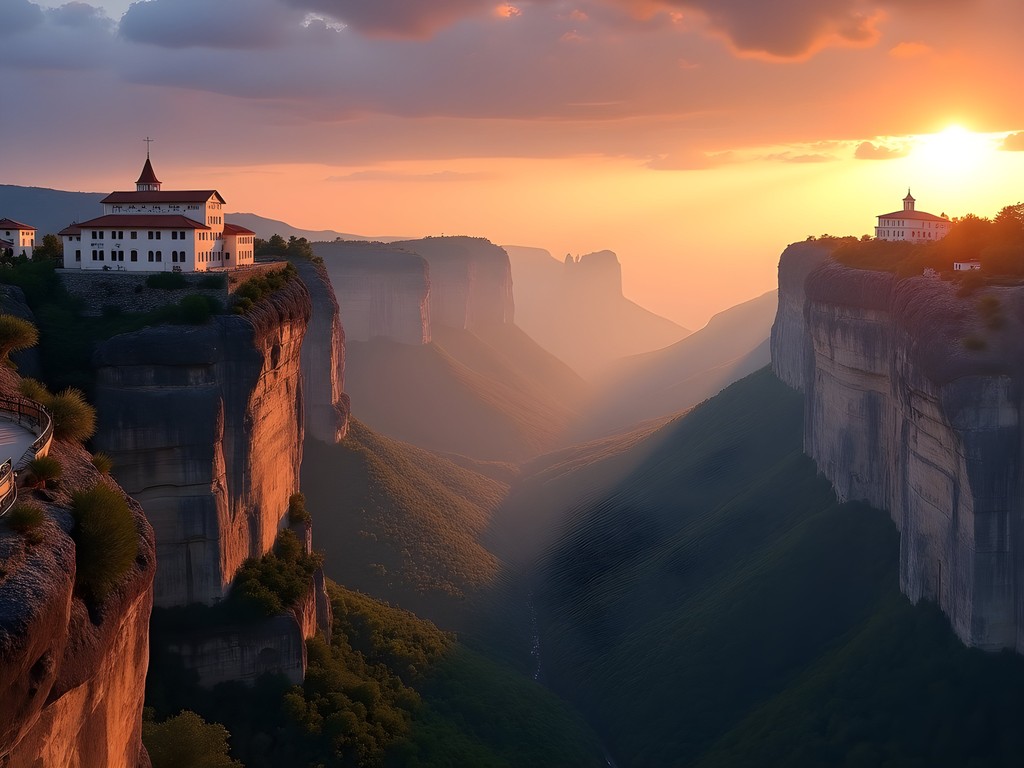
💡 Pro Tips
- Visit the Natural History Museum in Kalambaka for geological context before seeing the monasteries
- Pick up a historical guidebook specifically about Meteora—the general Greece guides don't do it justice
- Look for the old rope baskets still displayed at some monasteries—they were the original 'elevators'
Planning Your Visit: The Six Active Monasteries
When planning your Meteora adventure, understanding the six active monasteries is essential. Each has its own character, history, and yes—varying degrees of stair-climbing required. My personal recommendation? Visit at least three to appreciate the diversity, but don't try to cram all six into a single day unless you enjoy feeling like you've just completed an Olympic event.
Great Meteoron (Megalo Meteoro): The oldest, largest, and highest monastery (613 steps up!), founded in the 14th century. Its museum houses religious artifacts, manuscripts, and a fascinating kitchen that looks like something from a medieval fantasy game. The views are spectacular, making those stairs worth every burning muscle.
Varlaam Monastery: My personal favorite for its gorgeous frescoes and excellent museum explaining monastic life. The courtyard feels like stepping back in time, and the church's acoustics are so perfect that I once heard a small group of visitors softly singing Byzantine hymns—goosebumps guaranteed.
Holy Trinity (Agia Triada): The most dramatically positioned monastery, requiring 140 steps carved into the rock. This is the monastery featured in the James Bond film For Your Eyes Only, and trust me, it's even more impressive in person than on screen. It's less visited than the others, offering more peaceful exploration.
St. Stephen's (Agios Stefanos): The most accessible monastery—no stairs, just a small bridge! This makes it perfect for those with mobility concerns. It's run by nuns rather than monks and features beautiful gardens and intricate embroidery work.
Roussanou: Perched on a lower rock pillar, this nunnery seems to grow organically from its foundation. The interior is smaller but exquisitely decorated with frescoes. The approach offers some of the best photography opportunities in all of Meteora.
St. Nicholas Anapausas: The smallest monastery and often overlooked, which means fewer crowds. Its compact size makes the frescoes feel more intimate, and the tiny chapel contains some of the finest Byzantine art in Meteora.
To capture these magnificent structures, I highly recommend bringing a versatile camera with a good zoom lens. The ability to frame both wide landscape shots and detailed architectural features made all the difference in my photography.
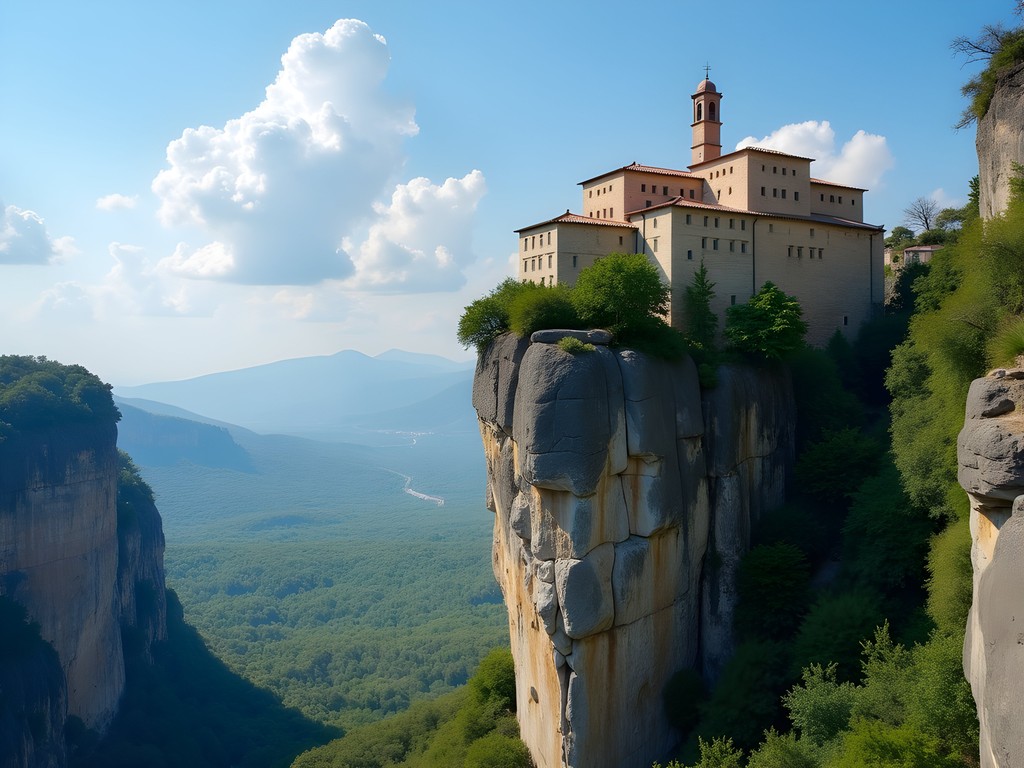
💡 Pro Tips
- Purchase a combination ticket if visiting multiple monasteries (slightly discounted)
- Check each monastery's closing days—they rotate throughout the week to ensure some are always open
- Wear easily removable shoes as you'll need to take them off before entering each monastery
Perfect 3-Day Itinerary for Couples
After three visits to Meteora, I've perfected what I consider the ideal romantic spring itinerary for couples. The region deserves at least three days to fully appreciate its magic without feeling rushed.
Day 1: Orientation and Sunset Views
Arrive in Kalambaka by midday and check into your accommodation. I recommend staying in either Kalambaka or the adjacent village of Kastraki. For a truly special experience, book a room with monastery views—there's nothing like waking up to that surreal landscape outside your window.
Spend your afternoon getting oriented with a visit to the excellent information center in Kalambaka. Then, head to the panoramic viewpoints along the main road for that essential first glimpse of the monasteries from afar. As the sun begins to lower, make your way to Psaropetra Sunset Point (ask locally for directions). Bring a small picnic blanket and a bottle of local wine for one of the most romantic sunset experiences you'll ever have. The light transforming the rock pillars from gray to gold is absolutely mesmerizing.
Day 2: Monastery Exploration
Rise early to beat both the heat and the tour buses! Start with Great Meteoron when it opens, then continue to Varlaam nearby. These two largest monasteries require the most time to explore properly. After lunch in Kastraki (I recommend Taverna Gardenia for authentic Greek cuisine with a view), visit either Holy Trinity or Roussanou in the afternoon when the light is perfect for photography.
In the evening, treat yourselves to a special dinner at Meteoron Panorama Restaurant, where the monastery views compete with the excellent traditional Greek dishes for your attention.
Day 3: Active Adventures and Hidden Gems
Start your morning with a guided hiking tour through the rock forest. Several local companies offer routes that follow ancient monk paths between monasteries, including caves where hermits once lived. These tours provide a completely different perspective of Meteora from below.
After your hike, visit the remaining monasteries you haven't seen yet. In the afternoon, consider one of these unique experiences:
- Rock climbing (for the adventurous couples)
- Truffle hunting and mushroom foraging tours (Meteora is famous for its fungi!)
- E-bike tours through the countryside
- Traditional Greek cooking class in Kalambaka
End your day with a sunset visit to the Holy Ghost viewpoint, where you can see all six monasteries silhouetted against the evening sky—a truly unforgettable memory to share together.
For hiking comfortably between viewpoints, a good pair of hiking shoes is essential. The terrain can be uneven, and spring can sometimes bring unexpected showers.

💡 Pro Tips
- Book monastery tours or hiking guides at least a day in advance during peak spring season
- Always carry water and sun protection—the rock landscape intensifies the sun's effects
- Ask your hotel about packed lunch options for picnics at scenic viewpoints
Dress Code, Etiquette, and Cultural Considerations
One of the quickest ways to spot first-time visitors to Meteora is by their inappropriate attire as they're handed cover-up clothing at monastery entrances. As someone who's made this mistake during my first visit (showing up in shorts after a morning hike—quelle horreur!), let me save you the embarrassment.
Dress Code Essentials:
- Women must wear skirts below the knee (no pants) and have shoulders covered
- Men must wear long pants (no shorts) and have shoulders covered
- All visitors must remove hats inside churches and monasteries
While most monasteries provide wrap-around skirts for women and sometimes cover-ups for men, it's more respectful (and comfortable) to dress appropriately from the start. I've found that a lightweight travel skirt that packs easily is perfect for women visiting religious sites throughout Greece.
Beyond Clothing: Monastery Etiquette
These aren't just tourist attractions—they're active places of worship where monks and nuns live their daily lives. Some important considerations:
- Speak quietly, especially in chapels and churches
- Photography is prohibited in most chapels (though allowed in courtyards and exteriors)
- Never touch religious artifacts, icons, or frescoes
- Some areas may be marked as off-limits to visitors—respect these boundaries
- Monks and nuns generally don't engage in casual conversation, though they may answer respectful questions about the monastery
Cultural Context
Understanding a bit about Greek Orthodox traditions enhances your visit immeasurably. Notice how worshippers often kiss icons, light candles, and make the sign of the cross (right to left, different from Catholic tradition). If you see locals performing these rituals, give them space.
During my second visit, I happened to be there during Orthodox Easter preparations. The experience of hearing Byzantine chants echoing through the ancient stone corridors while monks prepared for the holiest day of their calendar was profoundly moving, even for someone not particularly religious like myself.
One final note: the monasteries charge a small entrance fee (currently about €3 per monastery). This money goes directly toward preservation efforts and supporting the monastic communities. Consider it your contribution to ensuring these remarkable places remain for future generations to experience.

💡 Pro Tips
- Bring a lightweight scarf that can serve as an emergency shoulder cover or head covering if needed
- Visit early in the morning to potentially witness monks or nuns going about their daily routines
- Learn a few basic Greek phrases—even simple efforts at 'hello' and 'thank you' are deeply appreciated
Beyond the Monasteries: Hidden Gems Around Meteora
While the monasteries rightfully steal the spotlight, the region around Meteora offers several hidden gems that most tourists miss. As someone who believes in truly experiencing a destination rather than just checking off the main attractions, these lesser-known spots have become some of my favorite memories from my visits.
Theopetra Cave
Just 4km from Kalambaka lies one of the most important prehistoric sites in Greece. Theopetra Cave has evidence of continuous human habitation spanning an astonishing 130,000 years! The archaeological museum nearby displays artifacts from Neanderthals through the Neolithic period. What fascinated me most was seeing the 23,000-year-old human footprints preserved in the cave floor—talk about walking through history!
Traditional Villages
The villages surrounding Meteora offer authentic glimpses into rural Greek life. Kastraki, nestled right at the base of the rock pillars, has charming narrow streets and traditional stone houses. For an even more off-the-beaten-path experience, visit Diava or Sarakina, where you might be the only tourists in the village taverna. The warm hospitality I've experienced in these small communities has been truly touching.
Mushroom Hunting and Culinary Experiences
Meteora's unique microclimate makes it a paradise for wild mushrooms—over 350 species grow in the region! During my last spring visit, I joined a guided mushroom foraging tour with a local expert who showed us how to identify edible varieties. The tour concluded with a mushroom-focused meal that was one of the most memorable dining experiences of my life. For mushroom enthusiasts, the Natural History Museum of Meteora and Mushroom Museum offers fascinating exhibits and tasting opportunities.
Ancient Battlefields
History buffs shouldn't miss the battlefield of Sarantaporo, site of a crucial 1912 battle in the First Balkan War. The small museum offers interesting context about this pivotal moment in modern Greek history. Having grown up with stories of Quebec's own historical battles, I found the parallels in how these events shaped national identity particularly interesting.
River Activities
The Pinios River flows near Meteora and offers excellent rafting, kayaking, and swimming spots during late spring. After days of monastery-hopping and hiking, cooling off in the clear waters surrounded by lush forest was exactly what my tired muscles needed. Several local outfitters offer equipment rentals and guided experiences.
For capturing these diverse experiences, I've found my action camera invaluable, especially for the more adventurous activities like river rafting and cave exploring where a traditional camera might be at risk.
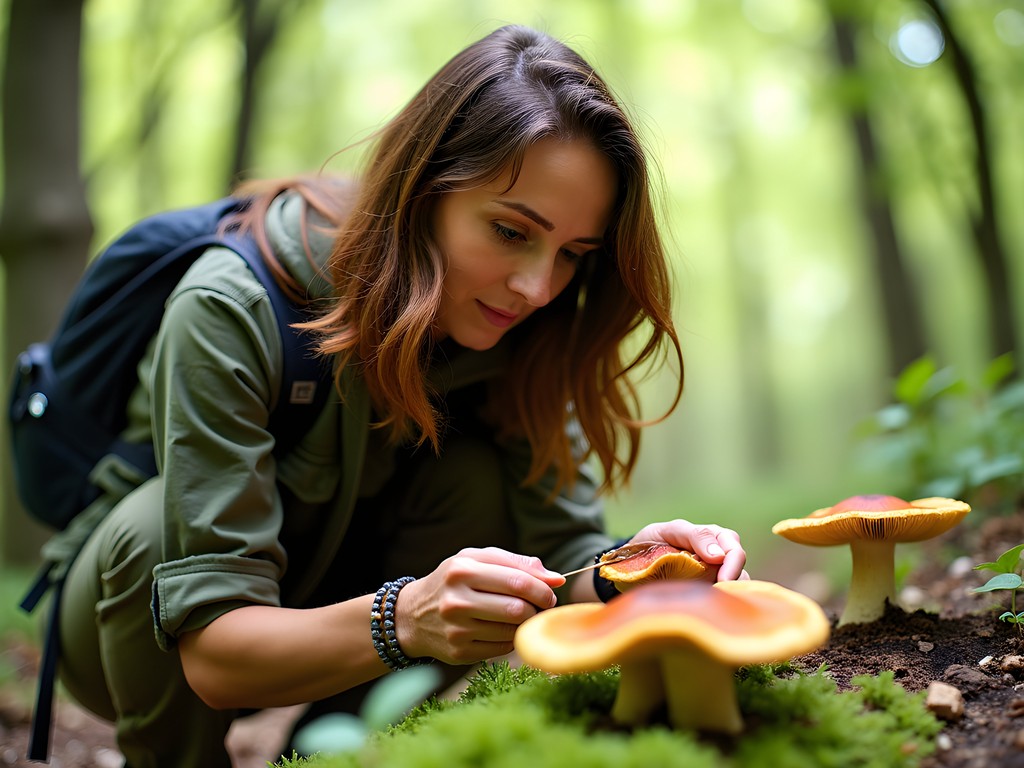
💡 Pro Tips
- Rent a car for at least one day to explore the villages and natural areas beyond the main Meteora sites
- The Mushroom Museum offers excellent cooking classes—book in advance as they fill quickly
- Ask locals about seasonal festivals—spring often features traditional celebrations in village squares
Final Thoughts
As my last evening in Meteora drew to a close during my most recent visit, I found myself at a small family taverna in Kastraki, sharing stories with locals over tsipouro (Greek spirit) and meze plates. The grandfather at the next table pointed to the monasteries glowing in the distance and said something in Greek that the server translated: 'They remind us that humans can build miracles when inspired.'
That sentiment perfectly captures the magic of Meteora. Beyond its Instagram-worthy views and historical significance lies something more profound—a testament to human determination, faith, and our capacity to create beauty in the most unlikely places. Whether you're spiritual seekers, history buffs, outdoor enthusiasts, or simply a couple looking for a destination that will leave you speechless, Meteora delivers an experience that resonates long after you've descended from its heights. À la prochaine, until we meet again, magnificent monasteries in the sky!
✨ Key Takeaways
- Spring offers the perfect balance of pleasant weather and fewer crowds for exploring Meteora
- Plan at least three days to fully appreciate both the monasteries and surrounding region
- Dress appropriately for monastery visits to show respect and avoid being given cover-up clothing
- The best experiences often come from venturing beyond the main sites to local villages and natural areas
📋 Practical Information
Best Time to Visit
Mid-April to early June (spring)
Budget Estimate
€70-120 per day per person including mid-range accommodation, meals, and activities
Recommended Duration
3-5 days
Difficulty Level
Moderate (Involves Stairs, Uneven Terrain, And Some Hiking)
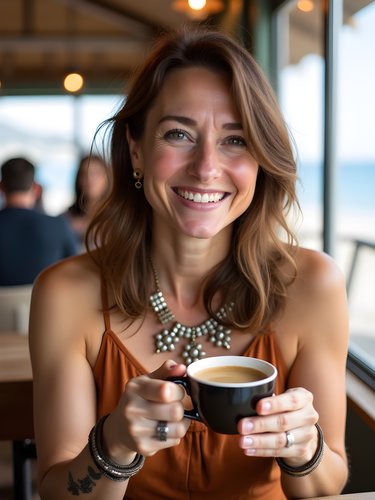
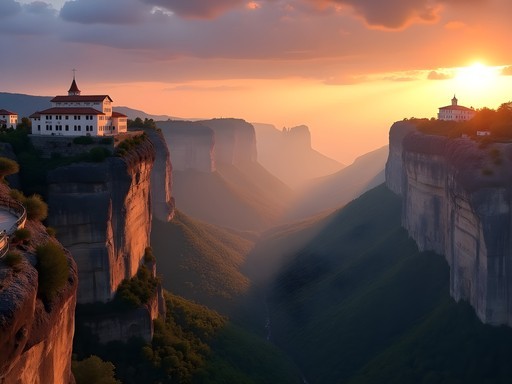

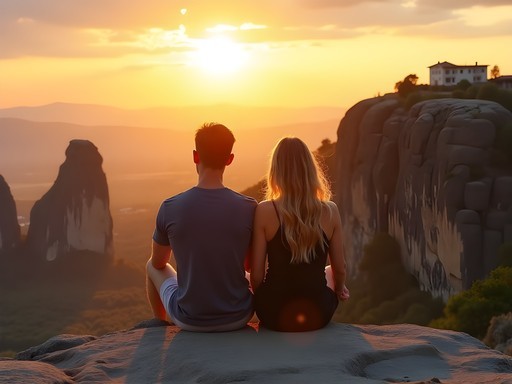
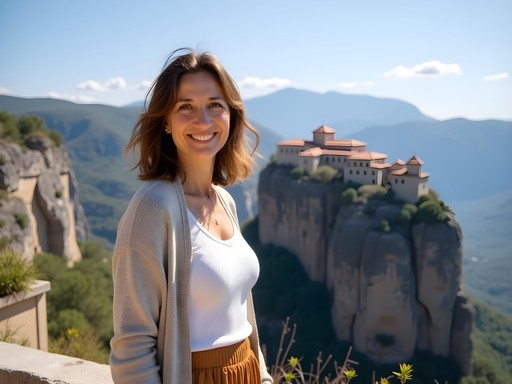
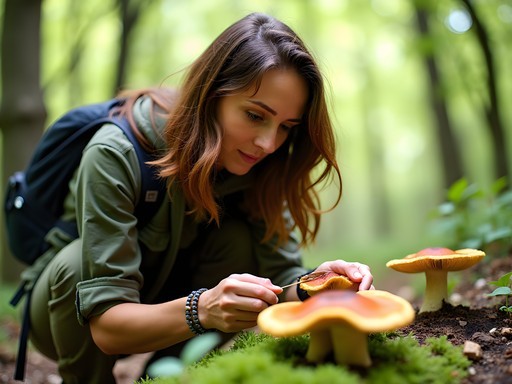



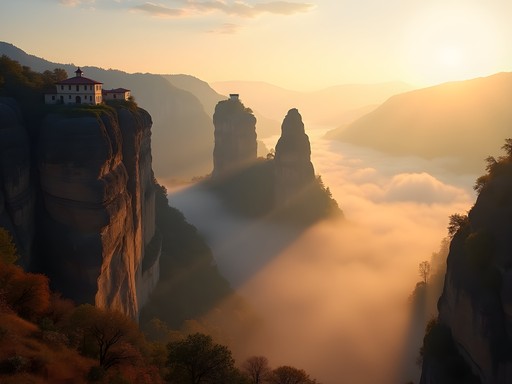






Comments
George Hayes
Natalie, your 3-day itinerary is spot on! We followed almost the same route with our family last year. One tip for parents: bring a pair of compact binoculars for the kids! Our children were fascinated spotting the tiny staircases carved into the rock faces and watching rock climbers in the distance. We also found that visiting Holy Trinity (the James Bond monastery) later in the day meant fewer tour groups. For photography enthusiasts, the morning light at Varlaam was magical - I got my best shots around 8:30am using my travel tripod to capture the monastery with that golden glow. The taverna you mentioned in Kastraki - was it Paramithi? We had the most amazing moussaka there!
mountainexplorer
Pro tip: stay in Kastraki instead of Kalambaka. Quieter, better views, closer to trails.
citylover
This looks incredible! Is it possible to visit Meteora without renting a car? I'm not comfortable driving those winding roads but really want to see these monasteries!
George Hayes
Absolutely! We visited with our kids last summer without a car. There are local buses from Kalambaka that run to the monasteries, though the schedule is limited. We ended up booking a half-day tour our first day to get oriented (kids loved the guide's stories), then hiked between monasteries the second day. The paths are well-marked and the hiking was manageable even for our 9-year-old. Just bring plenty of water and start early to avoid the midday heat!
citylover
That's so helpful, thank you! I might try the tour + hiking combo too. Did you stay in Kalambaka or Kastraki?
George Hayes
We stayed in Kastraki and loved it! Smaller, quieter, and closer to the hiking trails. Plus the views of the rock formations right from our guesthouse balcony were incredible for morning coffee!
photolife
Are drones allowed for photography? Those aerial shots would be amazing!
Amit Sullivan
Drones are strictly prohibited around the monasteries. The monks value their tranquility and there are also flight restrictions due to the historical significance of the area. Best to stick with traditional photography!
explorewalker
Just got back from Meteora last week and this guide would've been so helpful! We did all six monasteries in two days and it was exhausting but worth it. The dress code thing caught me off guard though - had to borrow those wrap skirts at two monasteries because my shorts were too short. Definitely pack accordingly! The sunset view from Great Meteoron was absolutely magical. Did anyone else find the steps to St. Stephen's surprisingly easy compared to the others?
citylover
How strict was the dress code? I'm planning to go in October and wondering if I need to pack anything special?
explorewalker
They're pretty strict! Women need skirts below the knee and shoulders covered. Men need long pants (no shorts). They provide wraps at the entrance if you're not dressed right, but better to be prepared. October might be chilly anyway!
Sarah Powell
Excellent guide, Natalie. I visited Meteora solo last month and found the logistics surprisingly manageable without a car. The local KTEL buses from Kalambaka to the monasteries run fairly regularly during high season, though I'd recommend anyone traveling this way to photograph the schedule at the bus station as online information was outdated. I'd add that Varlaam Monastery had the most comprehensive museum exhibits for history buffs, while Holy Trinity (though requiring the most stair-climbing) offered the most dramatic views. For solo female travelers, I felt completely safe hiking between monasteries, even on the less trafficked paths. The 'Footpath from Kastraki to Holy Trinity' was particularly rewarding and less crowded than the main routes. One practical note: the monasteries operate on a rotating closure schedule, so double-check which ones are open on which days to avoid disappointment.
vacationbuddy
Did you find the bus schedule limiting? We're debating between renting a car or using public transportation.
Sarah Powell
The buses worked fine for me in September, running about hourly until early evening. If you're visiting in off-season though, a car would give more flexibility. Just be aware that parking can be limited at some monasteries during peak hours!
beachgal
Just got back from Greece last week and Meteora was the highlight of our trip! We followed your 3-day itinerary almost exactly and it was perfect. That sunset spot you recommended near Psaropetra was incredible - we had it all to ourselves! One thing to add - we found that visiting the monasteries earliest in the morning helped avoid the big tour bus crowds. By noon they were packed! Also the hiking trails between monasteries are amazing but bring good shoes and water!
smartvibes
How strict is the dress code? Do I need to bring special clothes or can I rent something there?
vacationbuddy
They're pretty strict! Women need skirts below the knee and shoulders covered. Men need long pants (no shorts). Most monasteries provide wrap skirts for women who come in pants, but better to be prepared. I got caught in shorts and had to borrow some funny looking pants!
smartvibes
Thanks for the heads up! Will pack accordingly.
mountainexplorer
Been there twice. Worth every second. Sunset at Holy Trinity is magical.
Amit Sullivan
Natalie, your post brought back wonderful memories of my visit to Meteora last autumn. I recall hiking up to St. Stephen's just as the sun was beginning to set, casting those magnificent golden hues across the valley. The monks at Great Meteoron shared the most fascinating stories about how supplies were once hauled up using rope baskets! One tip for fellow travelers - the light for photography is absolutely magical during the first hour after sunrise. I spent three mornings at different viewpoints and each offered a completely different perspective. The small café in Kastraki that you mentioned - was it Paramithi? Their moussaka still haunts my dreams!
photolife
Thanks for the photography tip! Did you need a tripod for those sunrise shots?
Amit Sullivan
Absolutely! A tripod is essential for those low-light conditions. I used my travel tripod which was perfect as it's lightweight enough for hiking up to the viewpoints but sturdy enough for longer exposures.
Venture X
Premium card with 2X miles, $300 travel credit, Priority Pass